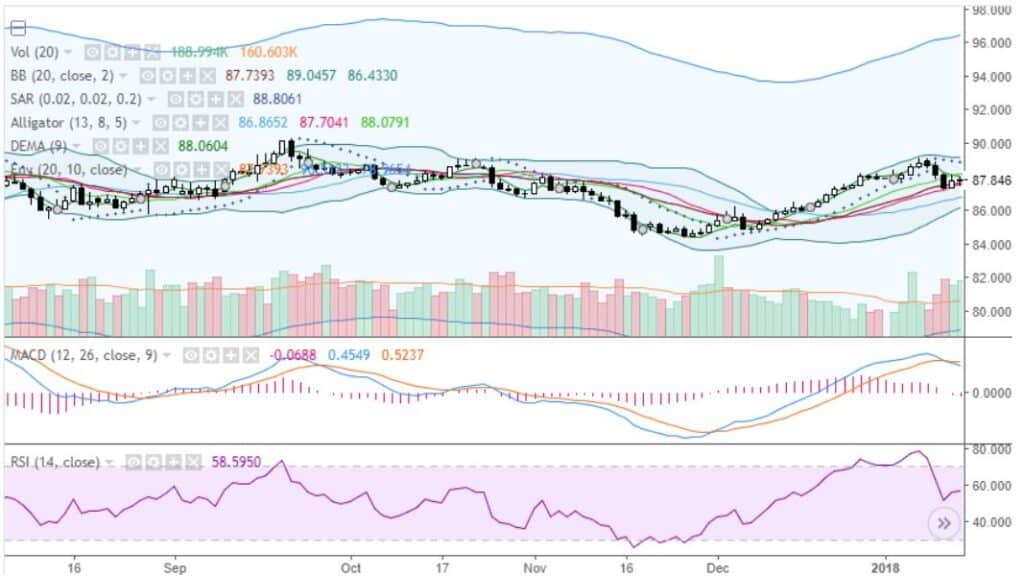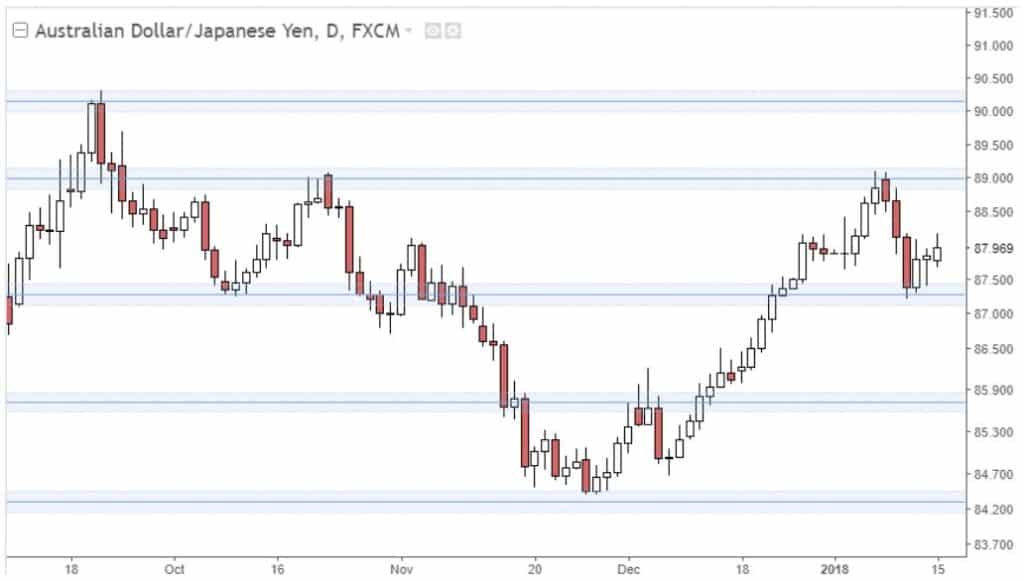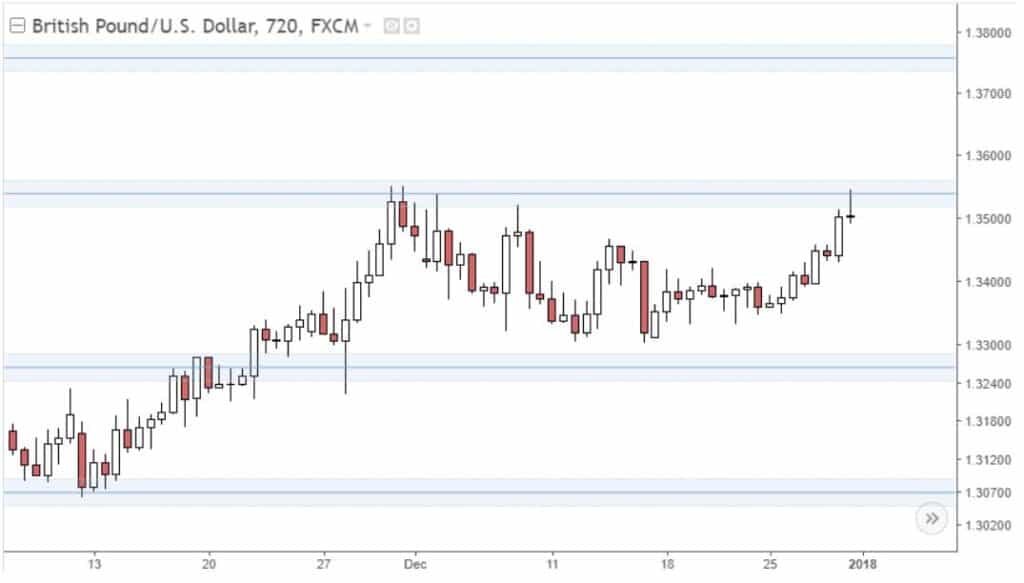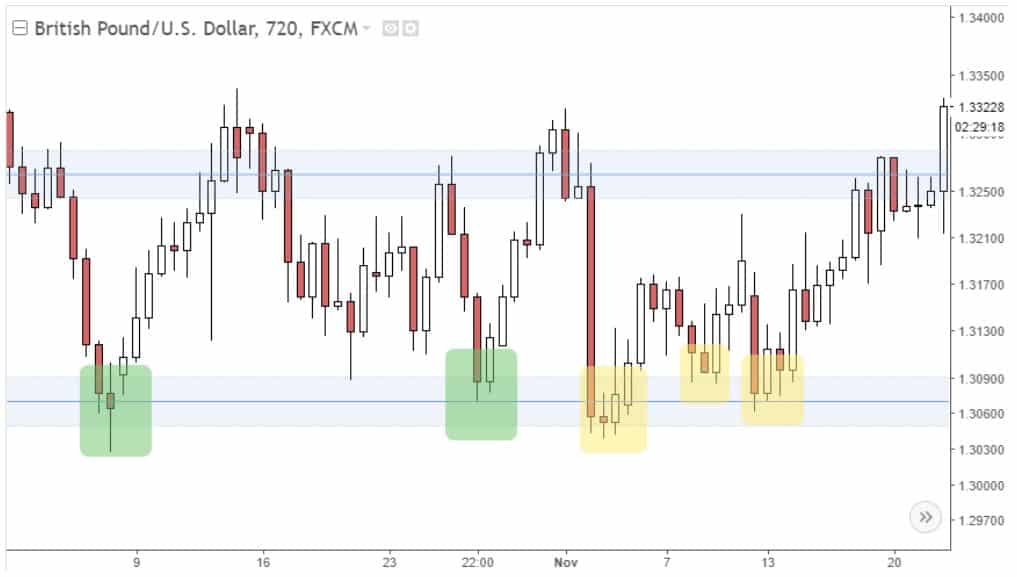Download FREE Price Action Trading Strategy PDF
How To Trade Forex With Price Action
Price action trading strategy is not based on indicators or any difficult techniques that can confuse you. All price moves in Forex either originates from bulls or buyers and bears or sellers.
When the price of the GBPUSD currency pair, for example, moves up, it is an indication that there are extra bulls than bears and vice versa. The Forex market and in fact any type of market is in a steady thrash about the situation between bulls and bears. Price action trading is about analyses of who presently controls price, buyers or sellers and if that group is probably going to be in control.
If the result of your analysis indicates that bulls are in control and that they will probably remain in control, you may buy (long). However, if the price analysis illustrates that bears are in control and that they are probably going to remain in control, then you may sell (short).
How to analyze price action
To analyze whether the bulls or the bears are in control, you can make use of two simple price action techniques: Support and resistance areas and advanced candlestick analysis.
Support and Resistance Areas
Support and resistance areas are the buy and sell areas you can recognize easily without any hassles on your chart. As soon as the price approaches these areas, it signals to you that it is probably going to pause or reverse entirely. This gives you the chance to either buy or sell at the exact time.
Advanced candlestick analysis
The advanced candlestick analysis is much more than the basic doji equals reversal candle sick that is very widely available. This type of analysis is much deeper and offers you a complete and a better understanding of the chart. As soon as you know what is represented on the chart, you would be able to know whether the bulls or the bears are in control of the price action by a single glance at the chart. This would tell you if it is the right time to buy or sell.
These two techniques are the basis of the price action trading strategy that is discussed in this article. They would assist you to discover and trade highly prospective setups. This trading strategy is completely based on Price Action.
It comes without any:
- Type of indicators.
- Puzzling techniques and;
- Saves you stress.
It’s merely about observing price movements and making well-groomed trading decisions.
Why use the Price action Trading strategy?
It adapts to all market environment
The price action trade strategy works in all market conditions. It effectively works in trending markets, markets that are less volatile, ranging markets, highly volatile markets, ranging markets and markets with high volatility.
Trading strategies based on indicator functions well in particular market conditions. A strategy that is effective in low volatility markets may not succeed in a market that highly volatile or in ranging and trending market situations.
Price action is adaptable. It suits any market condition while forex indicators, on the other hand, are much more inflexible and unadaptable.
In addition to adapting to any market condition, the price action adapts well with any currency pairs, various time frames and, more importantly to every type of trader. One more thing, price action trading strategy makes your trading simple and uncomplicated as it can let you execute trades easily with your smartphones.
It simplifies your trading
The price action trading strategy is very simple to use. The most frequent pitfalls of the majorities of trading strategies are that they are overly complicated and make it difficult for the trader to understand and utilize effectively.

The chart above, for instance, is too complicated and cannot be easily used to trade with the smartphone. Even when you try to do it, it is hardly comfortable or efficient and too muddled up.
The central part of any price action strategy is to simplify trading. It is essential because simple trading strategies work better.
The charts we will exemplify below only contain support and resistance areas. We will combine the support and resistance areas with candlestick analysis to trade Forex.
A better and more successful chart will appear like the chart exemplified below:

This chart is not muddled up, it is not difficult to understand or go through it. It contains the only thing you need for a price action trading analysis with nothing to distract your attention.
This trading style is fast effective, hassle-free and can be traded on the go with all manner of devices which includes your smartphone.
If you are looking for an uncomplicated and simple forex trading strategy that guarantees success, this article is the answer.
Support & Resistance Areas
Support and resistance areas tell you where to buy and sell and are an essential part of forex trading. You need to study how you can situate them to be successful as a trader.
What are Support and Resistance?
Situating support and resistance areas is very significant for your success in forex trading. You need to master the skill but the good thing is that it is easy to place.
Support and resistance areas split your chart into buy and sell areas. The area that lies on top of the present price is a sell area while any area underneath the present price is a buy area.
Support is equal to a Buy Area
Buyers and bulls here signify the same thing. Support is an area where buyers are mostly found and are thus referred to as a buy area.
Resistance is equal to a Sell Area
Sellers and bears represent the same thing here. Sellers are frequently found at resistance area and it is thus referred to as sell areas. On the chart of GBPUSD currency pair below, you’ll notice that price is coming close to the blue shaded area at 1.3500. This is a very robust resistance or sells area.

When price moves close to the sell area, huge numbers of sell orders are activated and these cancel out buy orders. The result of this is that the price either stands still or makes a U-turn and reverses in the opposite direction.
What causes this reversal movement?
The reason is simple. At these positions of support and resistance, the market movers such as banks and hedge funds place their orders at areas of support and resistance.
Why Market Movers Place Their Orders at Support and Resistance areas
Experienced traders avoid placing random entry orders with the aim of trying out if they would be lucky or not. They position their entry orders at crucial price levels. There are different things that determine what these crucial levels are:
- Annual, month to month or week to week highs or lows.
- Rounded numbers like at 1.0000 and 1.0500 levels as well referred to as psychological levels
- Unprecedented highs or lows.
- Areas where price movement halts or reverses two times or more.

In the GBPUSD chart model above, you’ll observe that price has paused at the 1.3070 two times the places highlighted green. The next time it comes to the level, it retraces back again and after that, it occurs two additional times in places highlighted with yellow.
This is why it occurs
Due to the fact that market movers position their buy orders at the 1.3070 level and when price movement approaches the area, it triggers buy decisions which result in a price reversal.
This occurs frequently with all currency pairs and also occurs in every financial market. This is the way the forex market functions, buy and sell orders are classified together in an identical common area and when price approaches those areas, you will observe the price impact.
Placing Support and Resistance Areas
There are many indicators you can find that alleges to offer traders great support and resistance areas. However, not of these are reliable. Placing support and resistance levels are better done by you.
A good Forex trading strategy requires some work! To develop a good trading strategy, you need to work hard but doing this is not complicated. What you only need to do is to put horizontal lines when you see an area where price reversal occurred two times and above.
Support and Resistance rules
Rules of placing support and resistance are three. These are:
- The areas should be position on the candle body as the body is more significant than the wick.
- Give preference to bounces that occurred recently over the previous ones.
- You require not less than two interrelating bounces to position a support and resistance area. Although there are some exceptions to this, the most frequently utilized ones are points that are year on year or unprecedented highs/lows. When you observe a year or all-time high/low you can position the resistance and support area in that position even when it comes with only a single bounce.
Guide on how to place Support and Resistance:
- Choose a daily chart and zoom out to get roughly one year of data. It could be a little less or more but that’s equally fine.
- Discover the highest and lowest bounces in the previous year and place an area at each one of them. Your areas must be at the candle bodies and not at the wick side and since these are annual highs and lows, it is okay to place them with just one bounce.
- Position support and resistance areas between the first two by linking up areas that have two or more bounces.
There are commonly five to eight support and resistance areas on majorities of charts. A chart with more than eight of these areas is perhaps too many.
So there you have it, our guide on Price Action Trading Strategy. We hope you have learned a new skill when trading forex. Don’t forget to download our free Price action trading strategy PDF.




